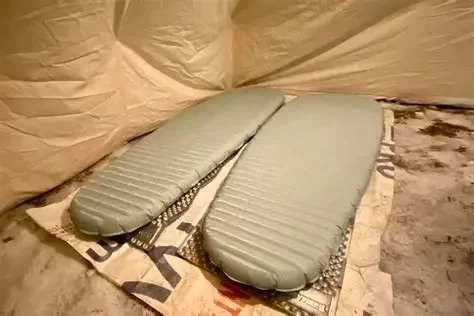Choosing the Right Sleeping Pad for Warm Weather – Complete Guide
- 1 - Why Sleeping Pad Choice Matters in Warm Weather
- 2 - Key Factors to Consider
- 3 - Real-Life Experience from Summer Camping
- 4 - Materials and Construction
- 5 - Common Mistakes and How to Avoid Them
- 6 - Recommendations for Different Camping Styles
- 7 - Final Thoughts for Comfortable Summer Nights
1. Why Sleeping Pad Choice Matters in Warm Weather
Many campers think that sleeping pads are only for cold weather insulation, but in reality, choosing the right sleeping pad for warm weather can make or break your summer camping trip. In hot conditions, a poorly chosen pad can trap too much heat or cause discomfort due to lack of breathability.
1.1 Comfort Beyond Temperature
Even in summer, the ground can be hard, uneven, or slightly cool at night. The right pad offers cushioning and just the right amount of thermal regulation.
2. Key Factors to Consider
When deciding on a sleeping pad for warm weather, look at R-value, breathability, weight, and packability. While high R-values are great for winter, summer sleeping pads usually perform best with lower R-values that prevent overheating.
2.1 Breathability and Airflow
Choose materials that allow air to circulate beneath your body. Open-cell foam or hybrid designs can help reduce heat buildup.
2.2 Thickness and Comfort
A pad that’s 2–3 inches thick is often ideal for summer backpacking—offering comfort without excessive insulation.
3. Real-Life Experience from Summer Camping
During a July camping trip near Lake Tahoe, I swapped my winter pad for a lightweight inflatable model with an R-value of 2.0. The difference was immediate: I slept cooler, woke up less during the night, and had no sticky back from trapped heat.
Fellow campers using insulated winter pads often complained about feeling too warm, even on breezy nights.
4. Materials and Construction
Warm weather pads often feature fabrics like ripstop nylon for durability and mesh panels or textured surfaces for airflow. Some models use horizontal baffles for better weight distribution, while others have vertical designs for increased ventilation.
5. Common Mistakes and How to Avoid Them
One of the most common errors is using a pad designed for winter in summer conditions. This traps excess heat and can make sleeping uncomfortable. Another mistake is choosing an ultralight pad without testing its comfort level—saving weight is great, but not at the cost of a sore back.
6. Recommendations for Different Camping Styles
For car campers, thicker self-inflating pads provide comfort without worrying about weight. Backpackers might prefer air pads with minimal insulation for lighter pack loads. If you’re kayak camping or motorcycle touring, compactness and waterproofing might be higher priorities.
7. Final Thoughts for Comfortable Summer Nights
Choosing the right sleeping pad for warm weather is about balancing comfort, ventilation, and portability. Whether you’re a weekend camper or a long-distance backpacker, investing in the right gear will keep your nights restful and your mornings energized.
If you want expert-tested recommendations and quality camping gear for your next summer adventure, explore the curated selection at Pine Cliff Resort—where outdoor comfort meets practical design.







